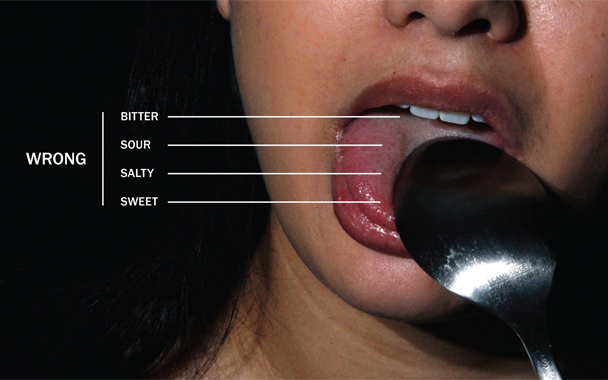A few weeks ago I saw, in a publication that you’d think would know better, a reference to something that really should be a relic of our misinformed past: The Tongue Map.
Remember it? Years ago, the disembodied organ, neatly divided by dotted lines into four tiny taste states (Sweet, Sour, Salty, Bitter), was a staple of high school science texts. The idea was that certain areas of the tongue were more useful than others for tasting each of the four basic tastes. As science, it was appealing and satisfyingly simple.
Unfortunately for the benighted publication in question, this bit of folderol was relegated to the myth bin years ago. In fact, while taste buds are slightly more prevalent along the front of the tongue, they are found throughout the oral cavity, and are more or less evenly distributed. So, for example, you can actually taste sour slightly better along the roof of your mouth than in the “Sour” section located along the back of the tongue in that old map.
Not only that, some years ago a new basic taste was added to the four stalwarts of yesterday. Called umami, it has long been recognized in Japan and is variously described as the taste of “meaty” or “savory.” Foods including tomatoes, parmesan cheese, and mushrooms contain large amounts of umami, but perhaps its purest expression is in dashi, the fish and seaweed stock that provides the flavor base for a wide range of Japanese dishes. Like salt, umami also has the ability to enhance the other flavors in foods, giving them a certain fullness and roundness.
A specific receptor for umami was found by molecular biologists in the West eight years ago, confirming for skeptics its existence as a separate taste. But the taste itself was first identified by Kikunae Ikeda at the Tokyo Imperial University in 1908.
So come on, folks. Isn’t it about time we put the old Tongue Map to bed for good?




 Pinterest
Pinterest


